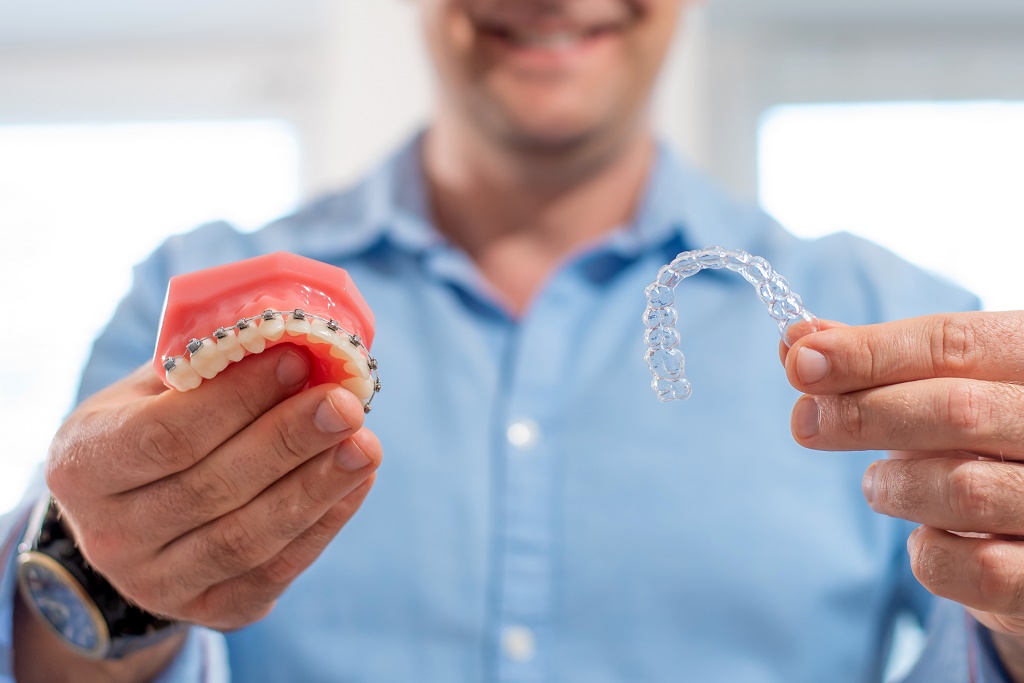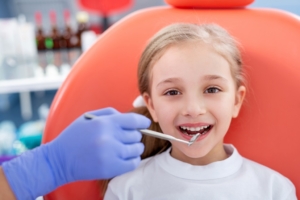Seeing the dentist is an integral part of your child’s oral healthcare routine, but did you know that it’s also important for them to see an orthodontist as well? Answering the question of “When should a child see an orthodontist?” isn’t generally on many parents’ radar.
Even if they don’t have all of their permanent teeth yet, an exam by an orthodontist could uncover potential orthodontic problems that a general dentist does not have the skill or expertise to treat. The American Association of Orthodontists (AAO) recommends that children see an orthodontist before their seventh birthday.
The Schulhof Center in Bergen County, NJ, is a dedicated family orthodontic practice that can provide excellent care for your entire family.
What Is Orthodontic Treatment?
Orthodontic treatment provides a healthy smile and natural alignment of teeth and jaws to create a functional bite. Orthodontists treat various misalignment problems, including overbite, underbite, crossbite, gaps between teeth, and crookedness. Treatment often requires braces.
How Will Orthodontic Treatment Help My Child?
Misalignment issues can occur at any age, but catching and fixing problems earlier is best. Braces are not the only way to fix potential problems. Some are minor enough to fix using different methods. Correcting these issues will help your child have a healthy smile they can be confident in as they reach adolescence and adulthood while protecting their overall health since unhealthy teeth can result in health problems beyond oral health.
Why Does My Child Have Orthodontic Problems?
Most of the time, orthodontic issues are simply the result of genetics, but external factors can also be the cause. For instance, letting your child suck on their thumb or a pacifier too much can result in teeth growing outward. Perhaps your child had an accident that caused their teeth to shift. Maybe they lost baby teeth too early, resulting in the other teeth shifting to fill the space.
Regardless of the problem, seeking early orthodontic treatment can prevent problems from becoming major issues.
Will My Child’s Teeth Straighten as They Grow?
No, your child’s teeth won’t magically straighten out as they grow up. If anything, their misalignment problem will only get worse, resulting in difficulty chewing, low self-esteem, tooth decay, and gum disease. Fixing the problem may even get more expensive. Seeing an orthodontist to get the treatment they need is the best solution.
When Will My Child Have All of Their Permanent Teeth?
Your child should have their permanent teeth by the time they reach the age of 12 or 13. Once the adult teeth have erupted is an appropriate time to seriously consider braces that will shift all your child’s teeth into proper alignment.
What Is the Appropriate Age for a Child to First See an Orthodontist?
According to the American Association of Orthodontists, since the first permanent teeth come in at around the age of seven, that is the perfect time for your child to see an orthodontist for the first time. Dr. Schulhof and Dr. Engel will inspect the visible permanent teeth to make sure they are growing correctly. Further examination can help project how the remaining permanent teeth under the gums will develop and whether or not your child has potential misalignment issues.
If My Child Is Older than 7, Can They Still See an Orthodontist?
Absolutely. The earlier your child can see an orthodontist, the better. Maybe you didn’t know that a child can see an orthodontist. That’s okay. We won’t turn your child away just because they are 8 or 9. Waiting may make it more difficult to correct any problems.
Do I Need a Referral from a Dentist?
While some orthodontists may require a referral from a dentist, most do not. And since parents are usually the first to notice that their child has a potential problem, it’s best to take them to an orthodontist to address it. All you need to do is contact The Schulhof Center and schedule an appointment.
Is My Dentist Also an Orthodontist?
Your dentist may also be an orthodontist. It’s also possible that your dentist works in the same office as an orthodontist. If not, they can often refer you to an orthodontist, or you can look up orthodontists with a simple Internet search.
If My Child Needs Braces, Are There Options to Choose From?
Yes! No longer do we rely solely on the standard traditional metal braces. Innovation in the orthodontic field has come a long way over the last couple of decades. We can now offer patients a variety of options.
- Traditional metal braces are bonded to the front of each tooth using an adhesive. The brackets on each tooth are anchored by a wire that must be adjusted from time to time by the orthodontist. Elastic bands also help anchor the hardware. Braces gradually shift your teeth into alignment over a period of 15 to 18 months.
- Ceramic braces feature larger brackets that can be clear or natural tooth-colored to provide a less noticeable treatment. They are installed the same way and work the same way as traditional braces.
- Lingual braces are affixed to the back of the teeth instead of the front to provide an invisible treatment option to patients. However, lingual braces can be more uncomfortable and are more suitable for adults. They are also more challenging to install, so the price is generally higher.
- Self-ligating braces feature a special clip in each bracket that holds the wire in place, so there is no need for elastic bands. The ease of adjustment, therefore, speeds up treatment.
- Invisalign is a clear removable series of aligner trays that provide an invisible treatment option to patients who prefer little change to their lifestyle or appearance. You wear the tray aligners for at least 20 to 22 hours a day, switching to a new set every two weeks to continue to the next stage of shifting. Since Invisalign is removable, you can eat whatever you want, and the trays are easier to clean.
What Is the Cost of Orthodontic Treatment?
Orthodontics treatments such as braces can run anywhere between $3,500 up to $10,000 or more depending on where you live, the severity of your orthodontic problem, and what option you choose. The cost of Invisalign is comparable to the cost of traditional metal braces at between $3,500 and $8,000. However, orthodontists offer payment plans, and dental insurance usually covers at least part of the cost.
 Contact the Schulhof Center Today!
Contact the Schulhof Center Today!
The Schulhof Center in New Jersey is proud to offer quality orthodontic care to patients of all ages. Please contact our office at 551-231-5323 to speak with our scheduling coordinator or visit our website to schedule online today!


 Contact the Schulhof Center Today!
Contact the Schulhof Center Today!